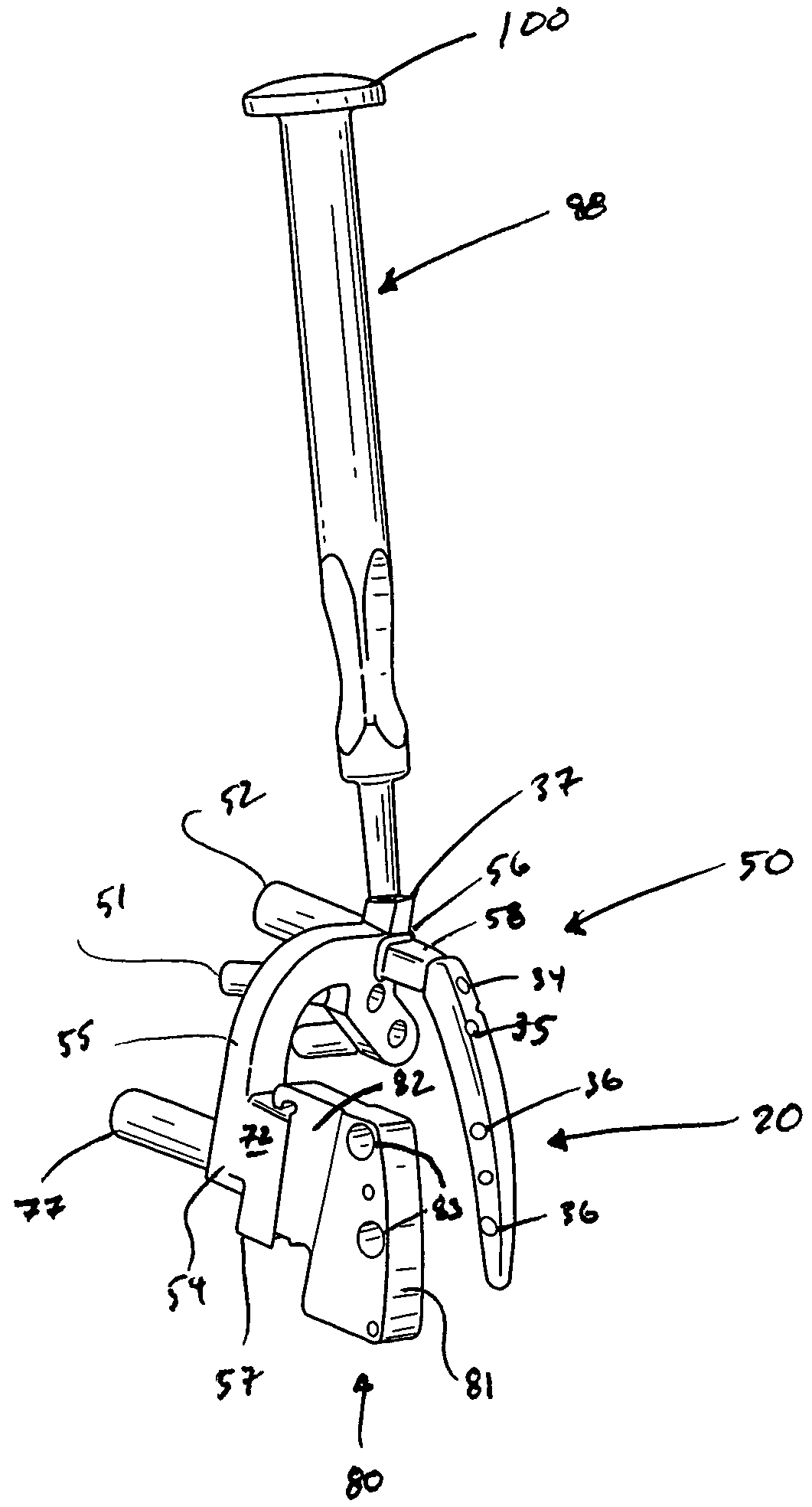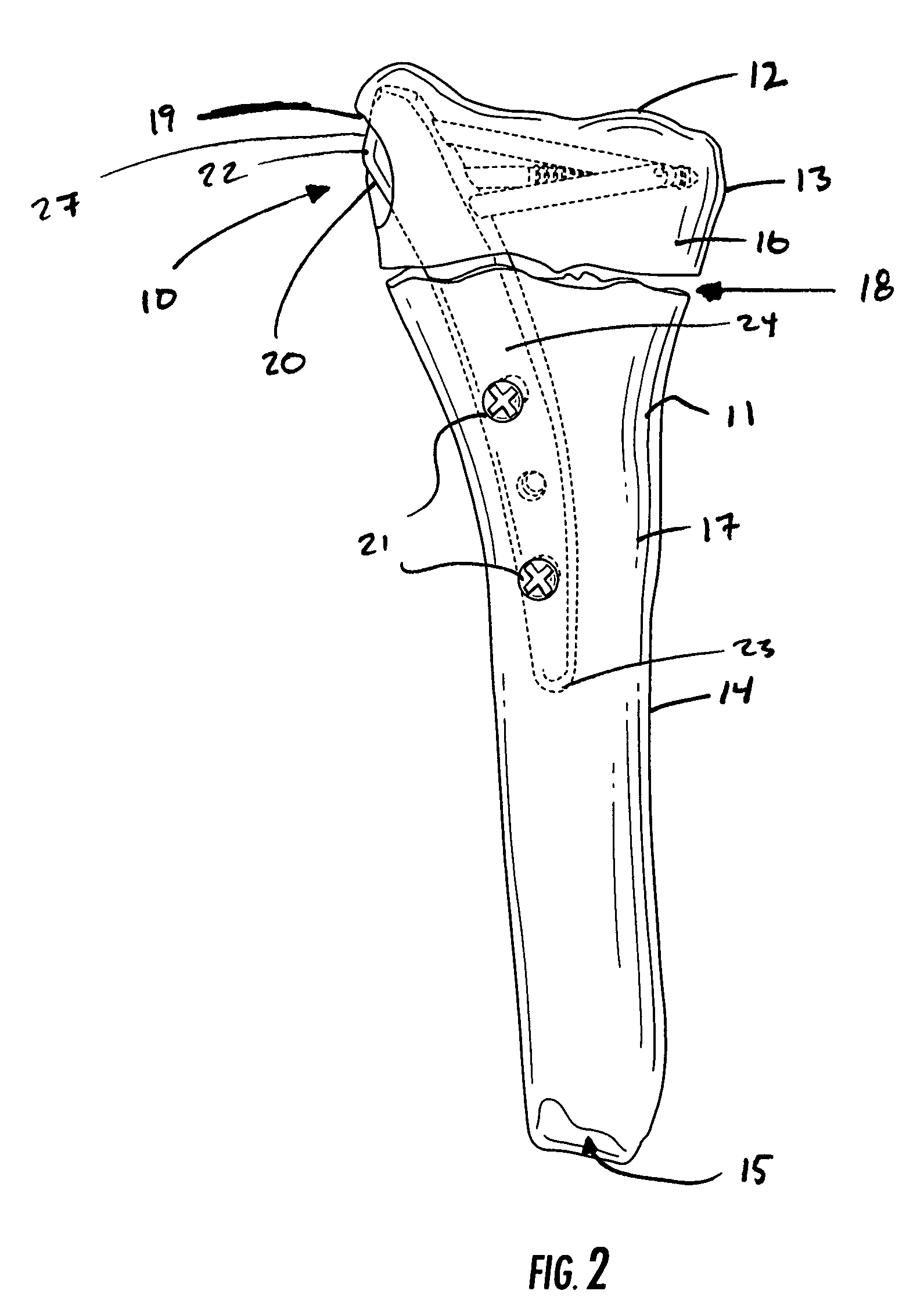Guide assembly for intramedullary fixation and method of using the same
a technology of intramedullary fixation and guide body, which is applied in the field of orthopedic fixation devices and devices, can solve the problems of affecting and affecting the accuracy of the positioning accuracy of the guide body
- Summary
- Abstract
- Description
- Claims
- Application Information
AI Technical Summary
Benefits of technology
Problems solved by technology
Method used
Image
Examples
Embodiment Construction
[0080]The present invention now will be described more fully hereinafter with reference to the accompanying drawings, in which some, but not all embodiments of the invention are shown. Indeed, this invention may be embodied in many different forms and should not be construed as limited to the embodiments set forth herein; rather, these embodiments are provided so that this disclosure will satisfy applicable legal requirements. Like numbers refer to like elements throughout.
[0081]An intramedullary fixation assembly 10 of one embodiment of the present invention is shown installed in a long bone 11 of a patient in FIGS. 1 and 2. The long bone could be any of a number of long bones, such as a femur, tibia, radius or humerus. The fixation assembly 10 is most suited to repairing fractures of the long bone 11 wherein the fracture is at one end near an articular cartilage surface 12 and wherein it is desired to leave the articular surface undisrupted during the repair. Also, the long bone i...
PUM
 Login to View More
Login to View More Abstract
Description
Claims
Application Information
 Login to View More
Login to View More - R&D
- Intellectual Property
- Life Sciences
- Materials
- Tech Scout
- Unparalleled Data Quality
- Higher Quality Content
- 60% Fewer Hallucinations
Browse by: Latest US Patents, China's latest patents, Technical Efficacy Thesaurus, Application Domain, Technology Topic, Popular Technical Reports.
© 2025 PatSnap. All rights reserved.Legal|Privacy policy|Modern Slavery Act Transparency Statement|Sitemap|About US| Contact US: help@patsnap.com



